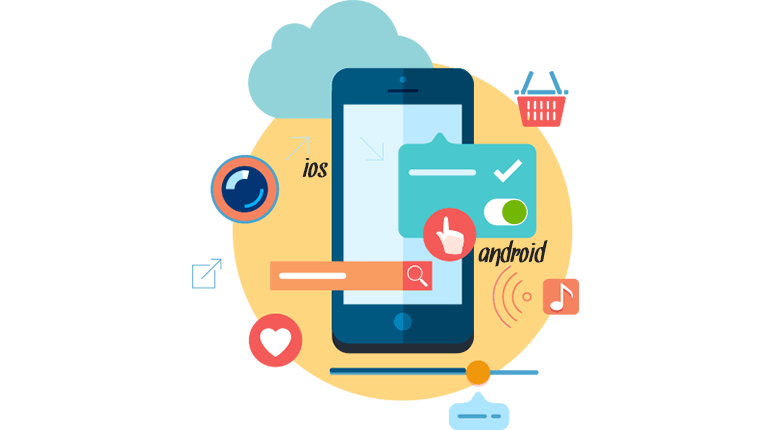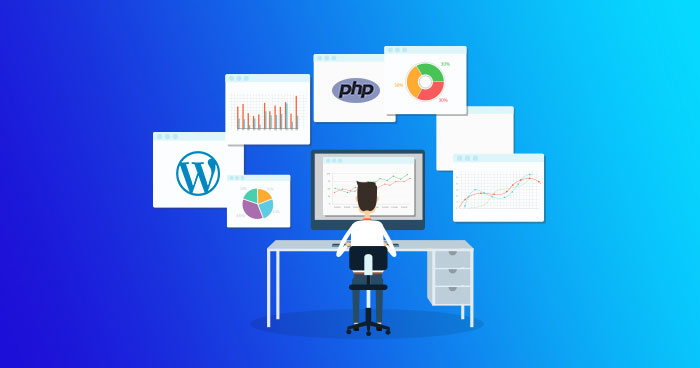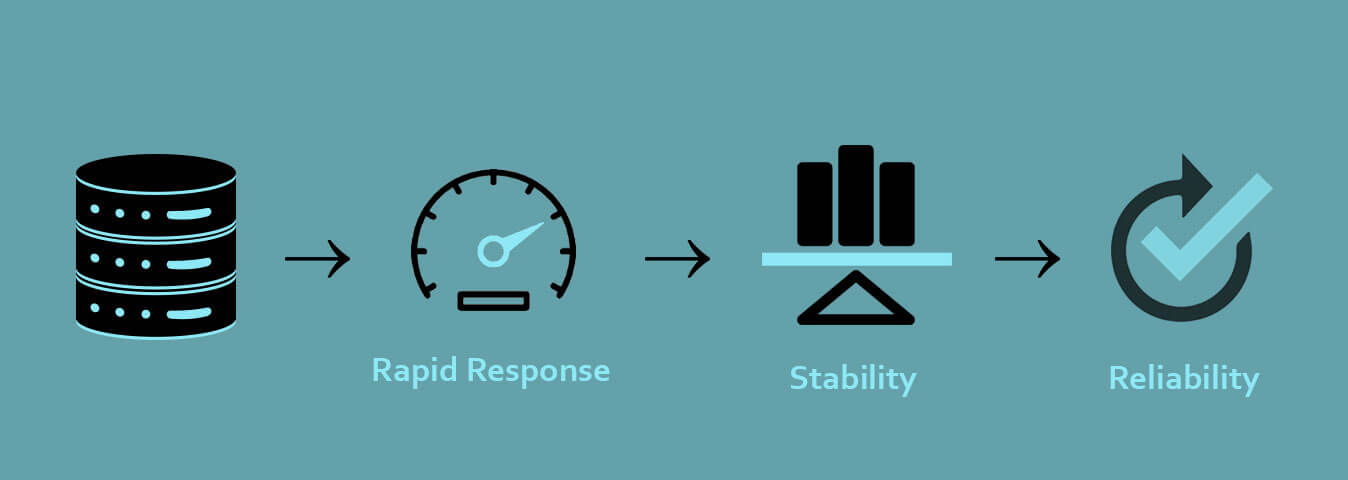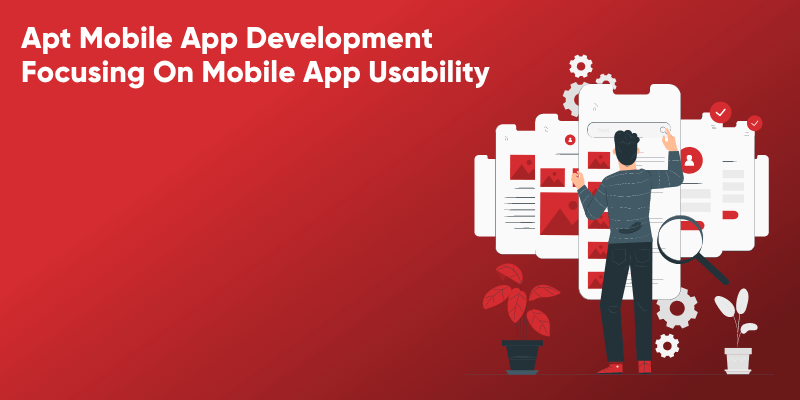Mobile App Usability: A 2025 Blueprint for B2B & B2C Engagement
In today’s mobile-driven environment, Android apps and iOS apps must deliver exceptional mobile app usability to stand out. Usability isn’t an afterthought—it’s core to user satisfaction, retention, and brand authority. With Google’s E‑E‑A‑T guidelines at the forefront, app developers must focus on real-world user experience, expert design, authoritative content, and trust-building features.
Think Like the End User
The first step in delivering a well-designed mobile app is clear: empathize with users. Whether creating an e-commerce app, enterprise tool, or entertainment platform, anticipate your user’s priorities: speed, clear navigation, and effortless onboarding. Research shows that 46% of users uninstall apps due to slow performance, and 11% abandon apps because of confusing interfaces. Incorporate user surveys, A/B testing, and analytics early to shape features around genuine needs.
Performance & Efficiency Wins
In 2025, consumers expect native-level performance in mobile apps, even on cross-platform builds like Flutter or React Native. To maintain brand trust, apps must load quickly, minimize battery and data use, and respond instantly. Use techniques like lazy loading, skeleton screens, and edge caching to give users a responsive, friction-free experience .
Navigation & Cognitive Load
An intuitive layout is essential to reduce frustration and downloads abandonment. Use properly sized touch targets (45–57px), one-thumb reach zones, and consistent Android and iOS navigation patterns like bottom nav bars and swipe gestures . These UI patterns boost user retention and contribute to a polished, brand-respecting design.
Onboarding & Error Recovery
Modern app launch strategies include context-aware onboarding—like tooltips guiding users to try voice commands in a conversational app, or tutorial overlays showing how to customize AI filters in a photo-editing app. And if errors occur, in-app recovery (e.g., “Retry” with retry counts) and helpful messaging reinforces expert-level design.
Test Like a Pro
A successful Android or iOS app release must include systematic usability testing. A well-structured test plan outlines user personas, testing goals, defined tasks, and success metrics EchoInnovate IT. A focus on human-centric issues—accessibility, error-handling, learnability, and responsiveness—ensures your app solves real-world problems.
Accessibility & Inclusivity
Beyond basic usability, apps must respect diversity. Implement voice navigation, dynamic text sizing, screen reader compatibility, and high-contrast themes to align with ADA standards. These steps elevate both user trust and search rankings—Google rewards accessible design.
Trust & E‑E‑A‑T Signals
To comply with Google’s E‑E‑A‑T, your Android or iOS app should showcase clear privacy policies, industry-standard encryption, secure authentication, and visible support channels. Include expert-written FAQs, changelogs, and transparent data controls. These elements build credibility and user confidence.
Continuous Improvement
Mobile app usability isn’t static. Post-launch, prioritize feedback loops through in-app surveys, analytics dashboards, and user reviews. Apply hotfixes, feature improvements, and A/B experiments regularly. In a competitive mobile landscape, iteration on usability is not optional—it’s vital.
Summary: 2025 Mobile Usability Best Practices
Empathy‑driven design: build around real user needs
Swift performance: optimize loading and responsiveness
Intuitive navigation: reduce cognitive burden
Effective onboarding: guide without overwhelming
Human-centric testing: include diverse user scenarios
Accessibility-first: ensure inclusivity and compliance
Trust signals: reinforce security and transparency
Iterative updates: adopt feedback and future-proof features
Why It Matters for B2B & B2C Brands
Investing in usability drives measurable outcomes: shorter onboarding time, lower uninstall rates, longer in-app session times, and improved user reviews. These metrics resonate directly with business goals—whether boosting conversion, minimizing support costs, or strengthening brand loyalty—in both consumer and enterprise markets.
If you’re exploring custom Android app or iOS app development that emphasizes mobile usability, E‑E‑A‑T compliance, and future-ready design—let’s connect. From MVP strategy to full-scale rollout, we’re dedicated to delivering apps that delight users and elevate businesses in 2025.
If I ask you what you use on your smartphone or any handheld device? An app would be the answer for everyone. Thus, we have mentioned here apt Mobile App Development With a Usability Focus.
And most of us use at least 6, 8, or over ten apps a day regularly. That’s right; we don’t use websites now that often but can’t spend a day without an app. For teenagers and young adults, social media and communication apps are their lifeline without which they literally can’t live.
Apps like Snapchat and WhatsApp are used by over two billion people regularly, and the number of users keeps on increasing with each passing day.
There are many ways in which the use of these apps is cool. That’s why many fresh graduates out of college, in the computer science field, looking to make a career in Apt Mobile App Development.
In this blog, I’ll try to make certain you get the whole idea of the Apt Mobile App Development With Usability Focus and how it can be beneficial for a user.
If you need further evidence for this, this blog will offer you the following information, which I think will be enough for you to grasp the topic
Think As An End-User Of Apps And Smartphones
Think of you as an end-user of apps and think from his perspective.
What features you want in the mobile app, and which features will you use more frequently? This will give you a clear idea about what to develop.
You could even ask users about their mobile app preferences before developing a mobile app. The closer your mobile app will be to their expectations, the better the response it will get from the user.

The problem with app developers is that there are many things that they can’t understand what end-users want.
It is all about reading the minds of the users, and that is the task of people concerned with R&D (Research and Development), And if they are not able to do their job well, it will be difficult for them to come up with a mobile app which is up to the mark.
Smartphones: Mobile App Usability
Manufacturers of smartphones spend millions of dollars annually making new phones, which are a step ahead of the competition.
But it is easier said than done. In fact, major smartphone manufacturers like Samsung and Huawei take their rivalry to the next level by luring people from other companies to bring the best talent to their company. The majority of end-users look forward to a great camera, the size of the battery, and the screen to buy a phone.
Usability is not in their minds. It is rather the responsibility of the phone manufacturer to think about Mobile App Development in Bay Area With Usability Focus and with what the end-user would think of.

When it comes to usability, companies (and specifically their R&D) need to think about what they can do to make a good smartphone. One that can resonate with the target audience is what companies need to think about.Usability in terms of smartphones is all about the hardware, unlike the app, which is concerned with software. Catering to the usability of a smartphone also can be related to that of the app; if an app is not working properly, there must be some bug in it or it isn’t able to connect well with the hardware.
Human Touch in the Apps
This is probably the most important aspect of making an app work for you.Adding the human touch is all about making an app feel natural to the user. All the end-users are human beings, not robots, and this aspect must be considered as the single-most-important aspect. Developers need to think about what aspects they can add to make things work for their clients, and that’s where the human factor comes in, which I want to discuss with you now. Every app can’t taste success like WhatsApp or Snapchat, but at least it must offer something valuable to the end-users. That’s why you need a human touch to your mobile app and keep things simple. Focus on building an emotional connection so that he will connect and interact with your mobile app in a much better way. Only in this way you can get everything from the development process concerning the mobile for the best results.

AI, AR, and VR are the next frontier of how apps will perform in the future. There are certainly many aspects that can be termed as an experience out of this world and that are possible only through applying AI and AR features. Apps based on AR like Pokémon are already a rage and its insane success has prompted many new games. Developers now think of how they can enhance the usability of end-users to create the next Pokémon. VR has been in use in smartphones through VR headsets. Many people are aware of it, but VR is much more than using it on a VR headset. Virtual Reality can offer amazing features and immersive experiences to the users like a movie in which a user can feel like they are part of it or a game where they can interact with the characters. So, there is much to explore for the app developers here as Ai, AR and VR can make apps do wonders.
Speed and Performance: Mobile App Usability
The above-mentioned two aspects can make or break your chance of getting a great app. It is not being able to run fluently and not delivering an exceptional user experience, and this is bad news for you. The reason can be aplenty, but your mobile app needs to be fixed if it is not able to provide even the average speed and performance of other apps. More importantly, if your users have a great first experience with your mobile app, they will surely return for more.

Use techniques and technology to make your mobile app experience as smooth as possible, and you will reap rich rewards for it. After all, no one likes to wait for an app screen or transition to load. Most of us are very impatient when it comes to anything not working as we think about it, even without using it first. We all want an instant response from an app, and that’s why speed and performance matter a lot for the eventual success of an app.
Highlight the Benefits
- Being listed on App Store or Google Play is the next target for any company. And it is not a very difficult process. Although, on the App Store, it is a bit difficult to be listed.
- But the next logical step is mobile app marketing, which can make your app rank high on searches.
- This isn’t easy as first of all; a quality product is needed to make things work. The best way forward here is using mobile applications is to highlight the benefits.
- Your marketing campaign should revolve around how your mobile app can solve user problems.
- Don’t tell the users about the features, and they don’t care about them.
- Tell them how your app can solve their biggest problem, and they will take a keen interest in your app.
Constant Improvement and Upgradation
The above process is just the start as you need to carry on the task and go only higher.At the start, you can get great numbers, but it can start to dwindle soon enough.This is where you need to think about how you can retain your app users and attract newer ones.
Keep improving the mobile app usability and add useful features that your users demand, and only in this way you can expect your app to compete with the very best in the business.
Just like the example of AI, AR and VR, apps are now being used in a variety of ways.
If you think that an app’s new version is all about new colors, think again! Lots of hard work and effort is put in just to get those colors working perfectly fine.
Constant improvement for an app is a necessity for the developers as a new app with the same or extra features can take over a previous app in no time.
The margin for error in today’s cutthroat marketplace is practically zero. Therefore, improvement and up-gradation of an app are much more than just an obligation for the app developers.
Final Word about Mobile Usability
- Apt Mobile App Development will be one of the fastest-growing industries in the coming few years.
- Just like anywhere else, in Dubai, it will be the same here. However, the magnitude of growth will be much higher than in other cities in the region. And the growth will propel many industries as a result.
- If you are also looking to consolidate your company’s position in the market, the assistance from a firm offering mobile application development in Dubai will be great.
- I am sure that there are many questions in the mind of people who want to know about a certain aspect mentioned in this blog.
- Please feel free to use the comments section below in this regard and also if you want to offer your valuable feedback. I’ll try to answer your queries at my earliest.
FAQs
What factors determine the cost of developing an AI app?
The main drivers are:
App complexity & AI model sophistication, from simple chatbots to real‑time, predictive, or AR/VR systems.
Industry vertical and compliance needs (e.g., fintech, healthcare add extra overhead).
Project stages: ideation, design, development, testing, deployment, and ongoing maintenance.
What are estimated cost ranges by complexity level?
Basic AI features (sentiment analysis, FAQ chatbots): ~$5K–$50K
Mid-level systems (recommendation engines, image/text recognition): ~$50K–$200K
Advanced AI apps (real‑time analytics, predictive models, AR/VR): $200K–$600K+
Other expert sources suggest:
Simple apps: $10K–$30K
Medium complexity: $30K–$150K
Enterprise-grade: $150K–$300K or more
How do industry sectors affect cost?
Different industries incur different typical costs due to regulation and technical complexity:
| Industry | Estimated Range (USD) |
|---|---|
| Healthcare | ~$50K–$80K+ |
| Fintech / SaaS | ~$45K–$150K (fraud, analytics) |
| E-commerce / Retail | ~$30K–$90K |
| EdTech / Logistics | ~$25K–$80K |
How long does development take?
A basic MVP might take 1–3 months.
More complex AI solutions (e.g. custom models, multiple integrations) may extend to 6–12 months or longer.



